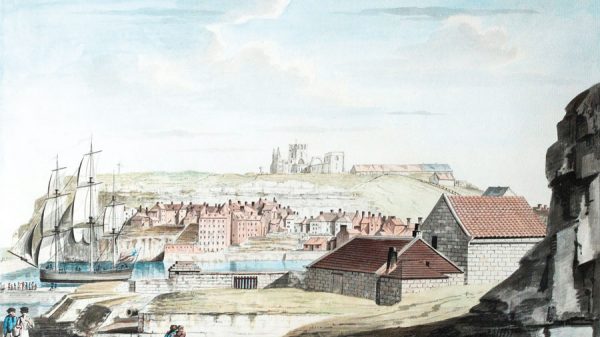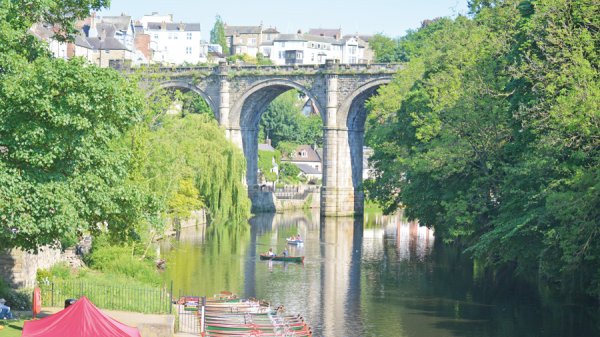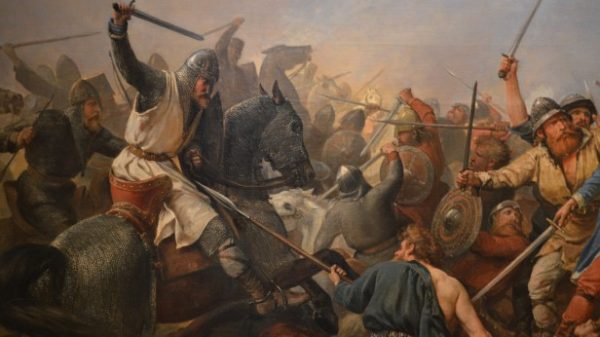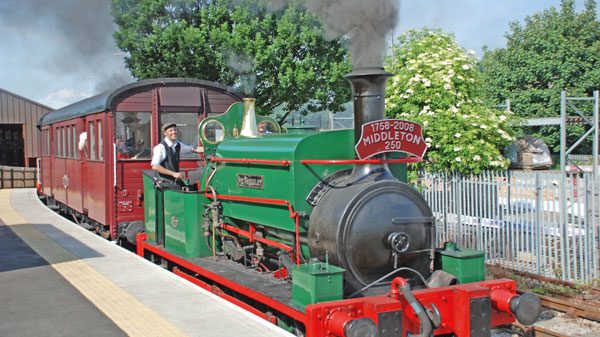Last month we featured Leeds City Centre Through the Ages. Following on from that we are going to be bringing you the history of local communities and suburbs of Leeds, starting this month with Beeston. Perhaps you grew up in Beeston?
We aim to take you on a trip down memory lane and beyond, looking at how Beeston arrived on the map, right through to how it is today.
Early years
Beeston is first recorded in the Domesday Book of 1086 as ‘Bestone’, and like the several other Beeston’s across England, the name means a settlement (ton) amidst the bents (or stiff grasses). The area was described as woodland and pasture that had been forcibly cleared by the invading Norman army. It was owned at this time by Ilbert de Lacy who, as a favourite of William the Conqueror owned much of the North of England. De Lacy passed the manor to Ralph Paynel but within a hundred years it had been donated to the Cistercians at Kirkstall Abbey.
There is evidence of a place of worship in Beeston since the Norman times – on the same site as St Mary’s Church although there is no record in the Domesday Survey. Records show an Anchorite at Beeston so there must have been a chapel here. An anchorite would be walled up for life in a cell adjacent to a chapel with an open grave ready outside for their eventual burial. Their only contact with the outside world was through a small hatch.
15th – 18th centuries
During the medieval period, Beeston was still a very small settlement. There was however, at least one manor house and a large tithe barn built in the 15th century, as these still survive today. Cad Beeston manor house is grade II listed and has been dated to around 1420 using tree ring dating. The building is currently used as private offices.
The Stank Hall Barn is also grade II listed and was dated to somewhere between 1448 and 1490. The barn is a Scheduled Ancient Monument and is one of the oldest secular buildings in Leeds. This timber framed building is sadly now derelict and has fallen into severe disrepair. A group ‘The Friends of Stank Hall’ have come together in order to raise awareness and funds to bring the barn back into use and renovated as such an ancient building deserves.
A resident of Stank Hall was active during the Civil War. Captain Joshua Greathead fought for the Puritans at the Battle of Adwalton Moor and again at Marston Moor. He later became involved in the Farnley Wood Plot against King Charles II but turned evidence in order to save his life when the plot was exposed. He was recorded as living in Stank Hall at the time but was living in London when he died.
The first turnpike road was built in the 18th century that passed through Beeston on the way to the Pennines and beyond. Resistance against the toll payments caused riots in the 1750’s when a carter was arrested for refusing to pay for passing through the bar into Beeston.
Beeston became famous in Royal circles in the late 18th century for its lace. King George II insisted on only wearing the finest English lace and was presented with a design created by a young woman named Catherine Murray. The lace pattern was a rose motif with a pair of ruffles. The King and other members of the royal family famously wore Beeston Pillow Lace at his birthday ball.
19th century
The early 19th century saw two new turnpike roads constructed which were essentially the Dewsbury Road and Elland Road that we know today. Around this time Beeston had a small population of just over 1500 people. It was a small mining and farming area, with lots of small scale pits scattered around and fields around the central village. During the Industrial Revolution, small scale mining became unprofitable as larger mines were opened to make use of new machinery. The land in Beeston was sold off and used to create a large residential development with terraces of back to back housing being built. The housing was mainly for a new commuting workforce, who travelled into the City centre to work in the manufacturing industry.
Holbeck cemetery opened in 1857 in a period when municipal cemeteries were opening all over what was then the township of Leeds. It cost £7000 to construct which included two chapels and was designed by a local landscape designer Joshua Major. This 10 acre site contains 86 Commonwealth War graves and other private memorials to men and women who lost their lives in both World Wars. There are also many ‘guinea graves’ from 1857 right through to the 1940’s which were a cheap solution for the poorer residents of the area.
There are many interesting people buried in the cemetery.
The largest memorial belongs to Henry Rowland Marsden. Born in 1823 in Holbeck, he became Lord Mayor of Leeds in a real rags to riches story. He was born to poor parents and worked in a mill at the age of 10. At 25 years old he immigrated to the USA where he made his fortune in mechanical engineering.
He returned from Connecticut and was made mayor in 1873. Marsden was reportedly the most popular Victorian mayor of Leeds, and following his death a public subscription raised £1000 to erect a statue of him which now sits on Woodhouse Moor.
St Mary’s Church was rebuilt in the Victorian era after being described by its vicar as ‘old, damp, dilapidated and inconvenient.’ The first stage of rebuilding was a new chancel in 1877. In 1886 there was finally enough funds to complete the transformation and the old chapel was taken down, as was the nave, with the rest of St Mary’s as we now know it being erected.
The Beeston Coop first opened in 1886 in Albion Place before moving to larger premises. The Coop is still a large part of Beeston today.
Cross Flatts Park began life in the 1800’s too. In 1846 the Tithe Commission shows the space as private land in the township of Holbeck. It was owned by Benjamin and Joseph Rogers who resided in a large manor house complete with an outbuilding complex on the land. Fast forward nearly 50 years and the last owners of the complex, the Low Moor Company, sold the land to the Leeds Corporation for £12,965. The Low Moor Company were owners of pits in the local area. Originally 44 acres, the Leeds Corporation erected pagoda style shelters and created promenades ready for the grand opening of the park on 11th July 1891.
A bandstand, ornamental fountains and an aviary were also added. The manor house, used first as an orphanage, then flats, was only demolished in the 1970’s when it became damp and uninhabitable. The old agricultural buildings and farm cottages linked with the house which was known locally as ‘The Grange’ are still there today at the side of the park.
20th Century
The early 1900’s was a great time of development for Beeston.
The foundation stone of St Anthony’s Catholic Church in Old Lane was laid in 1904 and it opened as the first purpose built Catholic Church in the community.
The beginnings of Elland Road Football Stadium appeared when the ground was leased to Leeds City Football Club following the demise of Holbeck RLFC. After just one season, the club built a 5000 seat covered stand. Attendances were rising rapidly and a 4000 seat grandstand was added in 1906. The ground was used as a drill and shooting practice venue during WWI until 1919-1920 season. The newly formed Leeds United took over in 1920. One of Leeds United’s greatest players Paul Madeley who signed with the club in 1962 was born in Beeston, in close proximity to Elland Road. Madeley was famous for being an extremely versatile player, playing in every position apart from goal during his career. He was quoted as saying “I don’t care where I play as long as I’m on the pitch.” The local born player is fondly remembered by many Leeds United fans today.
Waddington’s the board game and playing card company famous for classics such as Monopoly and Cluedo made their home in the area too.
Something else that still invokes fond memories today is the Moorhouse jam factory on Old Lane.
While working for a grocer named Ellison, William Moorhouse discovered ‘lemon cheese’ at a Swillington farm where he had been invited to take tea with the family. The farmer’s wife gave him the recipe and when he opened his own grocery shop he started making lemon cheese to order. The product became extremely popular, so William decided to close the grocery business and produce lemon cheese, marmalade and mincemeat full time.
The demand for Moorhouse conserves grew, and after much expansion the 12 acre site in Beeston was purchased in 1925.
The company was, by this time owned by William’s son Joseph. Joe went to visit the site for the first time on a sunny day.
He decided that ‘Sunglow Factory’ was an apt name and a doll dressed as a baker in a local shop also caught his eye. He bought the doll who became ‘Sonny Sunglow’ – the mascot of Moorhouse and Sons.
By the 1930’s, the products were being made on an industrial scale and always used seasonal produce. The local residents recall being able to tell what was being made by the smell pervading the area. From January with oranges and lemons, through to summer and the strawberry season followed by mincemeat making in the autumn, the surrounding streets were always filled with a wonderful aroma!
Moorhouse’s was also remembered for being fantastic employers. Staff enjoyed a tennis court and garden as well as regular parties. One woman, Antoinette Gallagher whose father worked there for years said “Mr Joe had time for his workers and was on first name terms with many of them. When I was seriously ill as a child he would call at the house with jars of ‘virol’ to build up my strength.”
This kind family were much loved. When Joe died in 1950, the hearse passed the factory where the employees came out and paid their respects. The company was taken over by Frank Moorhouse who was struck by tragedy just 6 years later. His son Anthony was kidnapped in December 1956 while on National Service during the Suez Crisis. He was bound and locked up in a small cupboard where he died from suffocation four days later. His body was eventually recovered and buried with full military honours in Lawnswood Cemetery early in 1957.
In 1959 the company was sold to Schweppes and after a merger with Cadburys the factory at Beeston was closed in 1972, resulting in the loss of over 500 jobs for the local community. Many also recall a spectacular fire that destroyed much of the building in 1976.
This was not the first time that Beeston had witnessed fire and explosion. During the Second World War Beeston was the hardest hit area of Leeds during its worst night of German aerial bombing in March 1941.
Despite having the most bombs dropped on it than any other district, not a great deal of damage was done as most of them landed on Cross Flatts Park. There is a rumour that the German pilot may have done this on purpose in order to save lives. This stems from a poem ‘Shrapnel’ written by Tony Harrison who grew up in Tempest Road, Beeston. We will never probably know the true story around this but, whatever the reason the bombs landed in the park, many lives were saved that night.
Today, Beeston is in a good location with links to the M621 and M1, and has imminent plans for redevelopment. One such recent addition is the Greenhouse, a sustainable eco-development of flats and offices said to be unrivalled in the UK.
Boasting two stadiums – Leeds United’s Elland Road and John Charles Centre for Sport which is home to Hunslet Hawks Rugby Club, as well as the White Rose Shopping Centre, Beeston certainly draws the crowds from the wider area. The people of Beeston remain proud with fond memories of the area they call home. In times of adversity they have stuck together with a strong sense of community.







